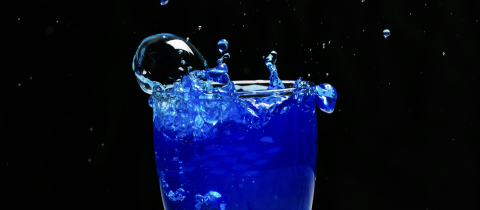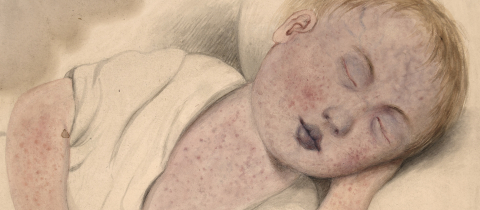Foreign invaders, be they molds on walls, toxins in polluted air, contaminants in food, viruses, bacteria, parasites, or fungi, represent a threat to our health. Luckily, our body has a way of battling such invaders. A complex network of organs, white blood cells, proteins, and signaling molecules collectively known as the immune system are ready to wage war against the enemy.
The first step is a mobilization of macrophages, a type of white blood cell whose name derives from the Greek for “big eaters”. In a process known as “phagocytosis” macrophages engulf intruders and break them down with enzymes they release from special sacs called lysosomes. If the disease causing organisms (pathogens) prove to be overwhelming, macrophages send out “danger signals” to immune “back-up troops,” most notably two types of T cells. “T” cells originate in the bone marrow but derive their name from the thymus gland in the chest where they mature and learn to distinguish “self” from “non-self.” This prevents “autoimmune reactions” in which the body attacks its own normal components as happens in lupus, rheumatoid arthritis, and multiple sclerosis, all examples of auto-immune disease. When “non-self” needs to be attacked, “killer T cells release cell-destroying “cytotoxins” while “helper T cells” coordinate the attack by sending out chemical messages that attract other immune cells and cause killer T cells to multiply.
Although they are formidable workhorses, T cells can suffer from “T cell exhaustion”. Confrontation with cancer cells is notorious for causing such exhaustion. Fortunately, T cells can recover after each immune mission and take on a new challenge.
After macrophages and T cells have chewed up the invaders, B cells come along and sweep away the debris. As they do this, they identify specific components in the debris that were responsible for triggering immune activity (antigens) and learn to produce special proteins called antibodies that will recognize the antigen should they meet it again. Such an encounter will lead to the destruction of any organism that features the antigen. This is known as acquired immunity.
A question often arises about the possibility of “boosting” our immune system. Since food is the only raw material that enters our body, it stands to reason that all body functions, including our immune system, is affected by what we eat. A diet of whole grains, veggies, fruits, and legumes with minimal alcohol, processed foods and refined carbs goes a long way towards improving overall health, including that of the immune system.
But wait. There is yet another way to boost our immune health. Speed up your lymph circulation! Lymph is the pale-yellow liquid that drains out of blood into surrounding tissues where it is collected and then circulated around the body through lymphatic vessels which are much like blood vessels. This “lymphatic system” also stores “lymphocytes,” such as the T cells and B cells we already encountered, along with “natural killer cells” that specifically attack cancer cells as well as cells infected with a virus.
Eventually, lymph, along with the lymphocytes it contains, is returned back into the bloodstream through lymph nodes, some 600 of which are located throughout the body. Intruders are thus fought both in the lymphatic and blood circulation systems.
Lymph nodes store lymphocytes and also filter cellular waste, viral debris, and damaged cells from lymph. During an infection they have to work harder, which is why they become swollen. Immune cells also grow and multiply in the bone marrow, spleen, tonsils, and thymus gland, all of which are considered to be part of the lymphatic system.
The lymphatic system has no analogue to the heart which is the “pump” that circulates blood and therefore has to rely on the activity of surrounding muscles for circulation. This is where exercise comes into the picture! The more muscular movement, the faster lymph circulates, and the more continuously lymphocytes are delivered to any site in the body where they may be needed, and the more effectively cellular waste is managed. The old adage “you rest, you rust” makes a lot of immunological sense.
Still, as people age, so does our immune system. The thymus, for example, undergoes “thymic involution” meaning that it shrinks with the passage of time. The regression starts at puberty and by the age of 75 or so, the thymus is reduced to merely fatty tissue.
The smaller the thymus, the less its capability to prepare T cells. A shrunken thymus means our T cells dwindle in number as we age and our immune response is less effective. We cannot slow time, but we can slow down immune aging with exercise. You don’t have to run marathons or buy fancy Peloton equipment. A simple after-dinner walk or 30 minutes of pedaling on the old-fashioned stationary bike works just as well.
Beside boosting immune health, exercise also produces endorphins, the body’s natural pain relievers along with dopamine and serotonin, the “happy hormones.” A win-win.
Dr. Nancy Liu-Sullivan holds a Ph.D. in biology and served as a senior research scientist at Memorial Sloan Kettering Cancer Center. She currently teaches biology at the College of Staten Island, City University of New York.







